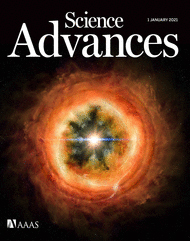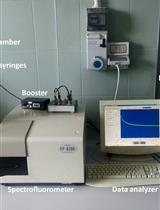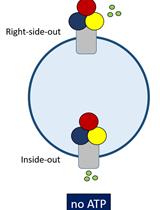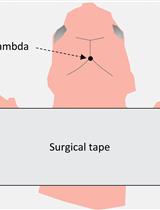- EN - English
- CN - 中文
An in vitro Blood-brain Barrier Model to Study the Penetration of Nanoparticles
研究纳米粒子渗透的体外血脑屏障模型
发布: 2022年02月20日第12卷第4期 DOI: 10.21769/BioProtoc.4334 浏览次数: 11674
评审: Gal HaimovichAkira KarasawaSrinidhi Rao Sripathy Rao
Abstract
The blood-brain barrier (BBB), a crucial protection mechanism in the central nervous system (CNS), is a selective barrier comprised of endothelial cells. It hampers the development of therapeutic and diagnostic tools for neurological diseases due to the poor penetration of most of these agents. Rationally engineered nanoparticles (NP) can facilitate the transport of therapeutic and diagnostic agents across the BBB. However, evaluating BBB penetration by NP majorly relies on the use of expensive and time-consuming animal experiments with low throughput. In vitro BBB models composed of brain endothelial cells can be a useful tool to rapidly screen multiple NP formulations to compare their BBB penetration ability and identify optimal formulations for in vivo validation. In this protocol, we present an in vitro model of BBB developed using murine cerebral cortex endothelial cells (bEnd.3). bEnd.3 is a commercially available, easy to manipulate cell line that forms tight junctions with potent paracellular barrier property. The protocol includes culturing of bEnd.3 cells, establishment of the in vitro model, and assessing NP permeability. We believe that, due to its simplicity and consistency, this step-by-step protocol can be easily used by researchers to screen NP-based drug delivery systems for BBB penetration.
Graphic abstract:

Background
The diagnostic and therapeutic approaches targeting brain pathologies, such as Parkinson’s disease, Alzheimer’s disease, and glioblastoma, require delivery of imaging contrast agents and drugs across the blood brain barrier (BBB) (van Rooy et al., 2011; Pehlivan, 2013; Aday et al., 2016). Only a limited number of small molecules can cross the BBB (Pardridge, 2003), with more than 98% of drugs developed for CNS pathologies not able to cross the BBB, which hampers their clinical development (Pardridge, 2005). Rationally engineered nanoparticles (NP) can facilitate the transport of therapeutic and diagnostic agents across the BBB (Li et al., 2021). Development of such NP formulations typically requires their screening in rodent models to assess their BBB penetration and to gain a better understanding of the expression and functionality of transporters in the BBB (Cecchelli et al., 2014; Aday et al., 2016). However, rodent studies can be expensive and time-consuming, with low throughput, especially when a large library of NPs needs to be screened. In vitro BBB models composed of brain endothelial cells can be a useful tool to rapidly screen multiple NP formulations to compare their BBB penetration ability and identify optimal formulations for in vivo validation. These models can also be used to gain mechanistic understanding of BBB penetration by NPs. Although in vitro models of rodent BBB have been widely used in the literature for evaluating the brain penetration mechanisms of different drug and NP formulations, there is no detailed protocol that can be easily used by researchers with different backgrounds. Here, we present detailed protocols to establish a simple and consistent in vitro BBB model using murine brain microvascular endothelial cells (bEnd.3), and to study in vitro penetration of NP formulations using this model. Our step-by-step protocol can be easily used by researchers to screen NP-based drug delivery systems for BBB penetration.
Materials and Reagents
15-mL centrifuge tubes (CellTreat, catalog number: 229411)
T-75 flasks (CellTreat, catalog number: 229341)
bEnd.3 cells (ATCC®, catalog number: CRL-2299TM), expand and store cell stocks in liquid nitrogen
Gelatin (porcine skin type A; Sigma, catalog number: G1890), store at room temperature
Dulbecco's modified Eagle's medium (DMEM) (Gibco, catalog number: 11965118), store at 4°C
Fetal bovine serum (FBS) (Gibco, catalog number: 26140079), aliquot and store at -20°C
Penicillin-streptomycin (P/S; 10,000 U/mL; Gibco, catalog number: 15140122), aliquot and store at -20°C
Trypan blue solution, 0.4% (Gibco, catalog number: 15250061), store at room temperature
Transwell® inserts (Corning, catalog number: 3401)
Growth factor reduced (GFR) Matrigel® (Corning, catalog number: 354230), aliquot and store at -20°C. Follow the instructions given in the procedure section.
DPBS (Ca2+/Mg2+ free) (Gibco, catalog number: 14190359), store at room temperature
TrypLETM Express (Gibco, catalog number: 12604-021, store at room temperature) or 0.05% Trypsin/EDTA (Gibco, catalog number: 15400-054, aliquot and store at -20°C)
Trypsin Neutralizing solution (Lonza, catalog number: CC-5002), use it only if you use trypsin as detachment enzyme, aliquot and store at -20°C
Phenol red-free medium (Gibco, catalog number: 21063029), store at 4°C
HEPES-buffered Krebs-Ringer solution (optional; Alfa Aesar, catalog number: J67795-AP), store at 4°C
50–100 nm sized nanoparticles prepared from poly(lactic-co-glycolic acid) (PLGA) and labeled with Dy677 fluorescent dye [Lab-made; please check Li et al. (2021)], freshly prepared before use
Mouse serum (Sigma, catalog number: M5905), aliquot and store at -20°C
Equipment
Laminar flow cabinet (Baker, SterilGard SG403-Class II Type A/B3)
CO2 incubator (Thermo, Forma Series 3110 water-jacketed incubators)
Benchtop centrifuge (Eppendorf, model: 5810R )
Improved Neubauer cell counting chamber (EMS, catalog number: 68052-16)
EVOM-2 Volt/Ohm meter (World Precision Instruments, catalog number: 300523)
LSETM Low Speed Orbital Shaker (CorningTM, catalog number: 6780FP)
Plate reader (Tecan, model: Infinite Pro 200)
Software
Tecan i-Control plate reader software, 2.0.10.0
GraphPad Prism, 9.2.0
Procedure
文章信息
版权信息
© 2022 The Authors; exclusive licensee Bio-protocol LLC.
如何引用
Readers should cite both the Bio-protocol article and the original research article where this protocol was used:
- Aday, S., Li, W., Karp, J. M. and Joshi, N. (2022). An in vitro Blood-brain Barrier Model to Study the Penetration of Nanoparticles. Bio-protocol 12(4): e4334. DOI: 10.21769/BioProtoc.4334.
- Li, W., Qiu, J., Li, X. L., Aday, S., Zhang, J., Conley, G., Xu, J., Joseph, J., Lan, H., Langer, R., et al. (2021). BBB pathophysiology-independent delivery of siRNA in traumatic brain injury.Sci Adv 7(1).
分类
生物工程 > 生物医学工程
神经科学 > 基础技术 > 转运测定
细胞生物学 > 基于细胞的分析方法 > 转运
您对这篇实验方法有问题吗?
在此处发布您的问题,我们将邀请本文作者来回答。同时,我们会将您的问题发布到Bio-protocol Exchange,以便寻求社区成员的帮助。
Share
Bluesky
X
Copy link













